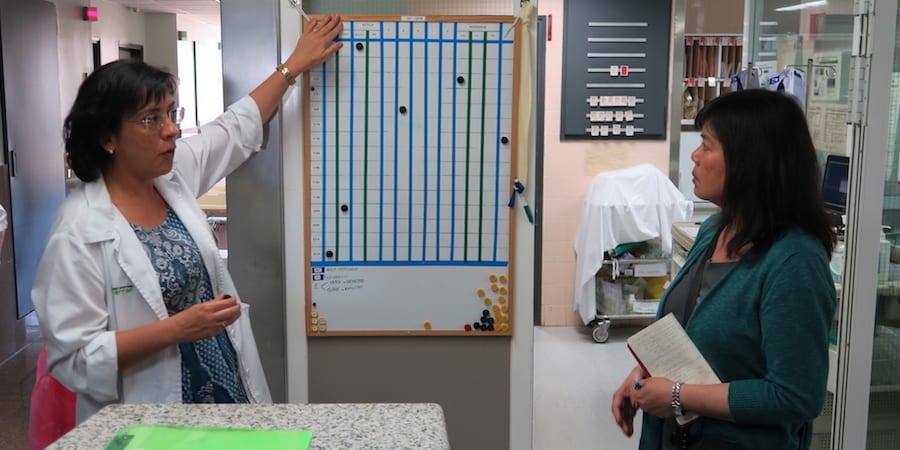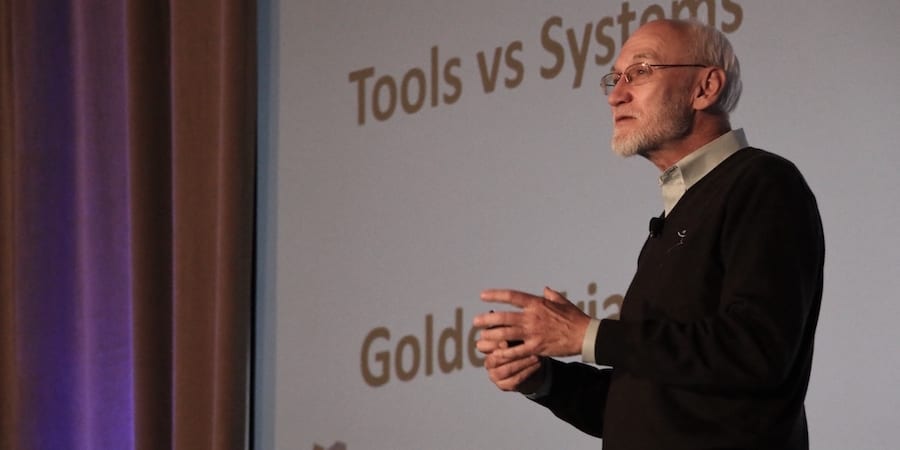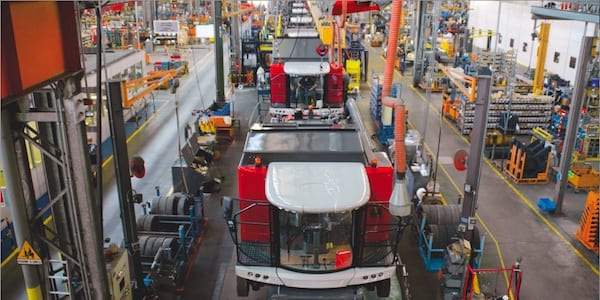
Dan Jones reflects on lean management in the digital age
FEATURE - Professor Dan Jones looks at the unique challenges the digital age presents the business community with, and explains how lean thinking can help us to effectively address them.
Words: Dan Jones, Senior Advisor, Lean Global Network
Some of you may have seen me on Twitter recently. It’s no coincidence, as in the past few months I have been exploring some of the new ways in which the new generation is communicating in our highly connected world.
We like to call the time we live in the “the digital age.” The internet, software and technology have all become major parts of our daily lives, and this trend shows no sign of slowing down.
This set me thinking about how lean fits into this new reality and, more interestingly, how it can play an active role in it.
In the process, however, I have also found myself reflecting on what we lean folks have learned so far. And it’s a great deal.
Some of the most valuable lessons we have learned recently include:
- the significance of developing capabilities at the front line;
- the importance of mentoring and coaching;
- how we place the scientific method at the core of lean transformations.
We have articulated all these pretty well now, but there is still a lot for us to learn: it’s tough to switch from an expert to a coach. In fact, it’s just as hard for us as it is for the managers we support.
A NEW SET OF OBSTACLES
It’s almost been 25 years since Jim and I published The Machine, and since then the movement has faced and overcome a number of challenges. Those it faces today, however, are completely different, both in scale and nature.
The main one is the perceived danger that lean will be seen as part of the old, pre-digital age if it keeps looking at the world from the perspective of traditional product manufacturing and service delivery.
The new generations are very software literate and think, learn and communicate in a fundamentally different way. They tend not to know a lot about lean. In turn, and too often, traditional lean people seem to be oblivious of how quickly and dramatically the world around them is changing.
Lean must evolve if it is to stay relevant (innovation is, after all, one of its main remits).
On the other hand, I believe technology visionaries are selling us an image of the future that is based on a very top-down assumption: that “digital” will wipe out everybody and everything that won’t be able to adapt quickly enough. This scenario encourages us to think that a new breed of (digital) experts and companies will come to displace thousands of jobs and disrupt entire industries.
Yet, there is a recognition that the speed with which new opportunities stemming from the digital age get realized depends on the rate of customer acceptance (normally quite slow) but also on the type of organization we’ll be able to create once the start-up phase is over.
All companies begin as a start-up, but as soon as they grow they are faced with the exact same problems any traditional business is presented with.
In line with these thoughts, I don’t think that an army of connectivity- and digital technology-fuelled start-ups will be responsible for all innovation and annihilate everything that existed before. While technological advances will certainly pose great challenges (they already do), they won’t give “the experts” another opportunity to come and save us.
And here is where the opportunity for the lean movement lies.
Lean thinking is uniquely placed to provide a blueprint for the adaptive, connected, learning, and customer-focused organization of the future. If we want to take part in the debate on the future of business, the next frontier for us lean people is to learn to communicate this blueprint to a new, younger audience.
Lean Startup principles have taught us a lot about validated learning and experiments, and the actions inspired by these principles (from observing customer behavior to testing, just to name a couple) are truly invaluable. However, these lessons need to be set in the context of co-designing solutions with customers and users, and the challenges companies face in scaling up these solutions. There is a clear gap whenever an organization tries to solve the bigger problem of developing expert users who can articulate and reflect on their needs.
Lean can help a lot in this undertaking, because what it is truly about is thinking back from the customer. And isn’t this what the organization of tomorrow will have to do?
MORE TO COME
The world is changing at an incredibly rapid pace, and the challenges it will face represent fertile ground for lean idea to grow further.
Think of societal challenges like the need to provide for the growing healthcare needs of an aging population in the face of budgets that won’t be increased; or the development of connected and sustainable communities, as more and more people move to cities; or, both in the industrialized and developing worlds, the need to create systems that are able to design, make and deliver what we need without relying on low-cost labor.
These are just a few of the issues lean can help to tackle, but it is necessary for the movement to take them on as missions. Otherwise, what’s its purpose? Is it just to make existing organizations more profitable? Is it providing jobs and developing opportunities for development? Is it to give work to consultants?
The lean movement has been too inward-looking for too long. It’s now its responsibility to communicate more broadly and effectively with society, and to face the challenges of the digital age head-on.
THE AUTHOR

Read more


PROFILE – Lean is spreading like wildfire across the Catalonian healthcare sector, following a do-it-yourself model unique to this part of the world. Our editor met one of the practitioners who are making it happen.


NOTES FROM THE GEMBA - Two French firms, AIO and Proditec, illustrate how Lean Thinking endures through crises by deliberately developing a new generation of leaders who sustain its culture and intent.


INTERVIEW – In this must-read Q&A, our editor sits down with lean guru John Shook to discuss the meaning of failure, the nature of innovation, and the resilience of our movement.


CASE STUDY - An approach based on Lean Daily Management System and experiments in a model area led an Italian manufacturer of combine-harvesters to become one of the leanest organizations in the Veneto region.

